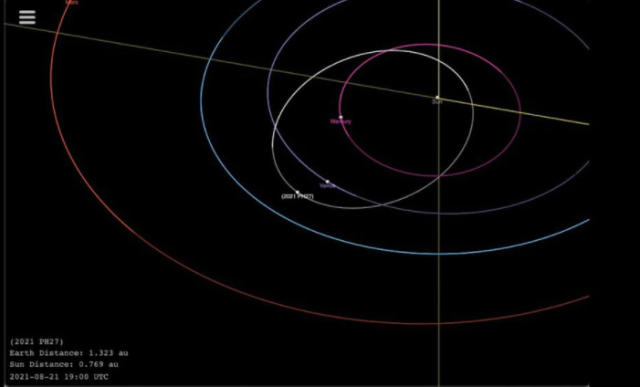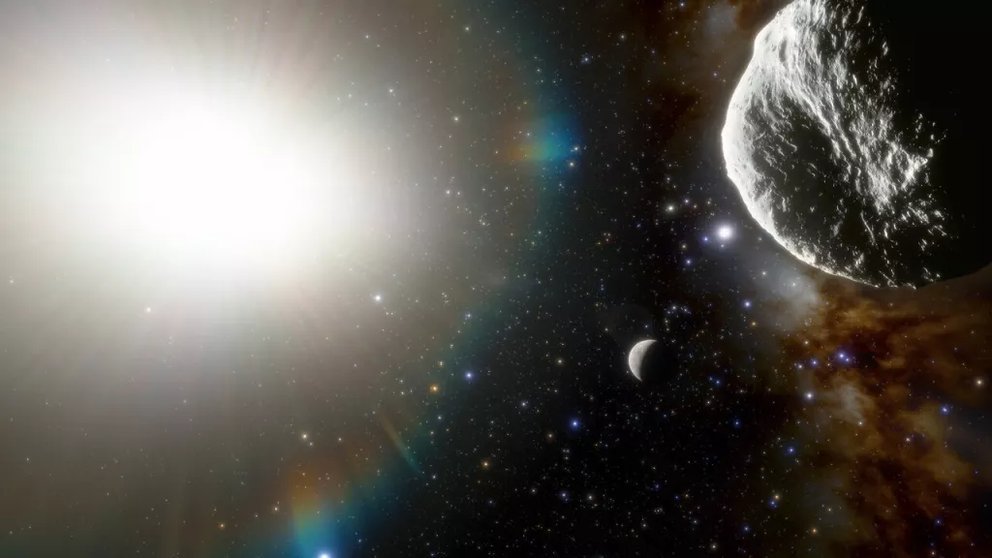லபடில்லா
Thanks to their observations on a new telescope located in Chile, astronomers have revealed a new celestial body much closer to the Sun than the first planet Mercury in the solar system.
By Infobe
According to astronomers, it is an orbiting asteroid whose orbit is closer to our ruling star than Mercury, although overall it will take longer to fully orbit the Sun.
Named the Asteroid 2021 has PH27 and the most oblique elliptical orbit, which is 113 days past the orbits of Venus and Mercury, which is slightly more than 88 days to orbit the Sun on Wednesday.
2021 PH27 is one kilometer in diameter and approaching At 12 million miles (20 million kilometers) from the sun, it reaches approximately 900 degrees Fahrenheit (500 degrees Celsius). It is hot enough to melt lead.
The asteroid is located behind the sun and will not be seen again until early 2022, so scientists can plan new observations and accurately determine its orbit, which will allow it to be officially named.
The discovery of 2021 PH27 is significant because it will one day help astronomers determine which meteorites could hit Earth.

“Understanding asteroid populations from within Earth’s orbit is important in completing the survey of asteroids close to Earth, some of which hit the Earth during the day and are not easily detected in most observations observed at night. Away from the Sun.”, Dijo Scott S. Shepard de la Carnegie Institution of Science.
Shepherd discovered PH27 2021 in images taken by Ian del Antonio and Shenming Fu of Brown University. At the NOIRLab’s Cerro Tololo Inter-American Observatory (CTIO) in Chile, they used a 570 – megapixel dark energy camera (DECam) with a 4 – meter Victor M. Blanco telescope.
The origin of 2021 PH27 is a mystery, but there are theories. “Most likely, 2021 PH27 will depart from the main asteroid belt between Jupiter and Mars and the gravitational pull of the inner planets will shape its orbit in its current structure”, “he said. Dijo Shepherd.
However, based on its large 32-degree tilt angle, 2021 PH27 is the most extinct comet in the outer solar system, bringing its orbit closer to the inner planet. Of the solar system “Added.
What does the future hold for 2021 PH27? It is not clear, but astronomers suspect it may have been destroyed by a collision with Mercury, Venus, or the Sun, but not for millions of years. In the meantime, it will enjoy the title of the closest celestial body to the sun.


:quality(85)/cloudfront-us-east-1.images.arcpublishing.com/infobae/SMPW7M5BQFERBOQUPJXKCOKARY.jpg)
:quality(85)/cloudfront-us-east-1.images.arcpublishing.com/infobae/NP5NEZXMZFGNLBHNEQJHPJVMKM.jpg)

:quality(85)/cloudfront-us-east-1.images.arcpublishing.com/infobae/X7DZAL3I4REJTKPZ4Y4DYBHFMI.jpg)